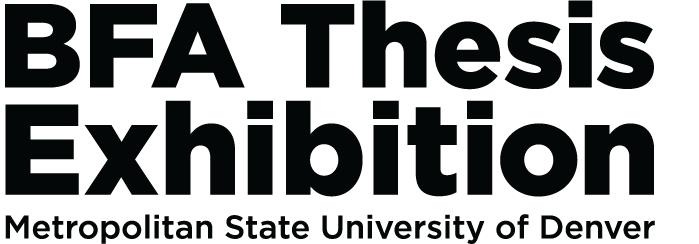Unseen
Emily Merlin
Sex trafficking is one of the fastest-growing, highest-yielding forms of crime in the world. Sex traffickers coerce innocent victims, children included, and solicit them for sex. Victims, many coming from vulnerable communities, are forced to endure traumatic and horrific conditions. Common types of sex trafficking include pornography, escorting, and prostitution. Sex trafficking is a horrific and multi-layered issue that is difficult to process for most people. Because of this, sex trafficking garners little to no media or political attention. The installation, Unseen, is a reaction to the lack of response from lawmakers and the media towards sex trafficking and its victims.
Seventy-one percent of human trafficking consists of sexual labor which is reflected by hanging undergarments in the art installation, Unseen. More specifically, the undergarments represent statistical data that echoes 64% of women, 9% of men, 23% of girls, and 4% of boys abducted into sex trafficking. [1] Many sex trafficking cases go unreported. With the lack of comprehensive data, it is difficult to pinpoint an accurate number of cases. However, the United States government estimates there are at least 24.9 million victims globally. [2] Furthermore, pimps on average, make $200,000 annually per victim. [3] This amount is visually represented within the installation by the stacks of dollar bills placed beneath the victims’ undergarments.
It is common for sex trafficking victims to be branded with tattoos of dollar signs, roses, crowns, or their pimp’s name on their chest or neck. Within the installation, these tattoos are transferred on each of the undergarments to reflect this claim to ownership. Unseen addresses the serious issue of sex trafficking by using statistical data to humanize the victims. Another component of the installation is to teach people about sex trafficking red flags, with the hope to save lives of both survivors and potential victims. The installation, Unseen, encourages viewers to raise awareness and maintain an open dialogue surrounding sex trafficking. It is critical our society has the knowledge and feels empowered to prevent sex trafficking from continuing.
[1] “Hotline Statistics.” National Human Trafficking Hotline. United States Government, December 13, 2019. https://humantraffickinghotline.org/states.
[2] "About Human Trafficking." U.S. Department of State, accessed September 20, 2021,https://www.state.gov/humantrafficking-about-human-trafficking/
[3] “How to Spot Human Trafficking with Kanani Titchen, TEDx Talks,” YouTubeVideo, 12:10, Februray 13, 2017, https://www.youtube.com/watch?v=hrxhptvEOTs

